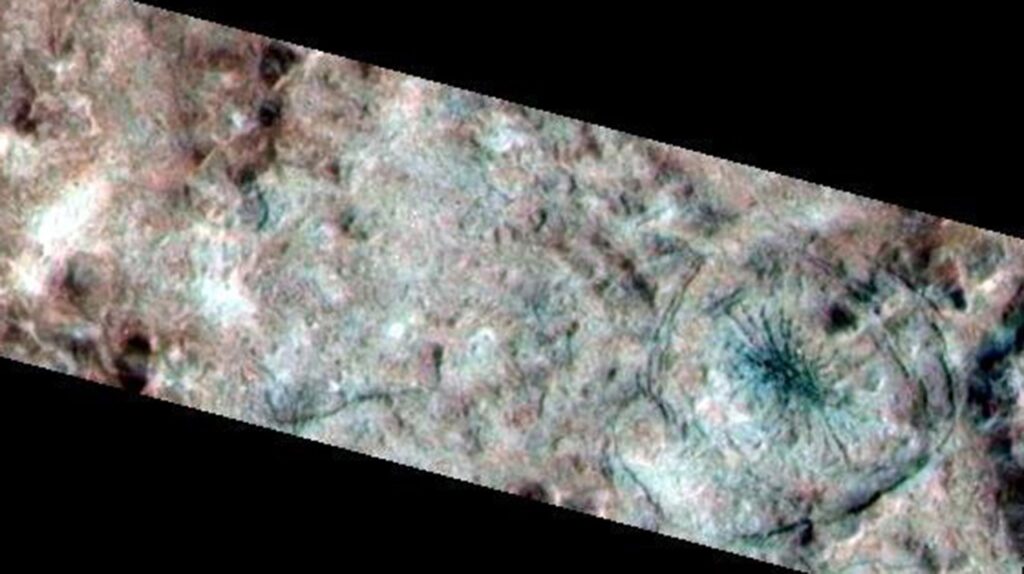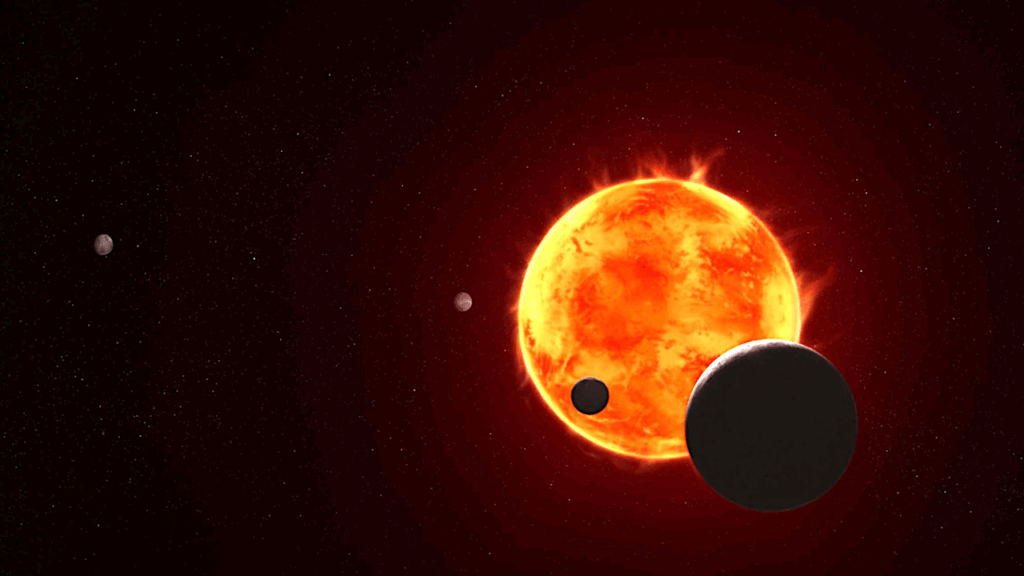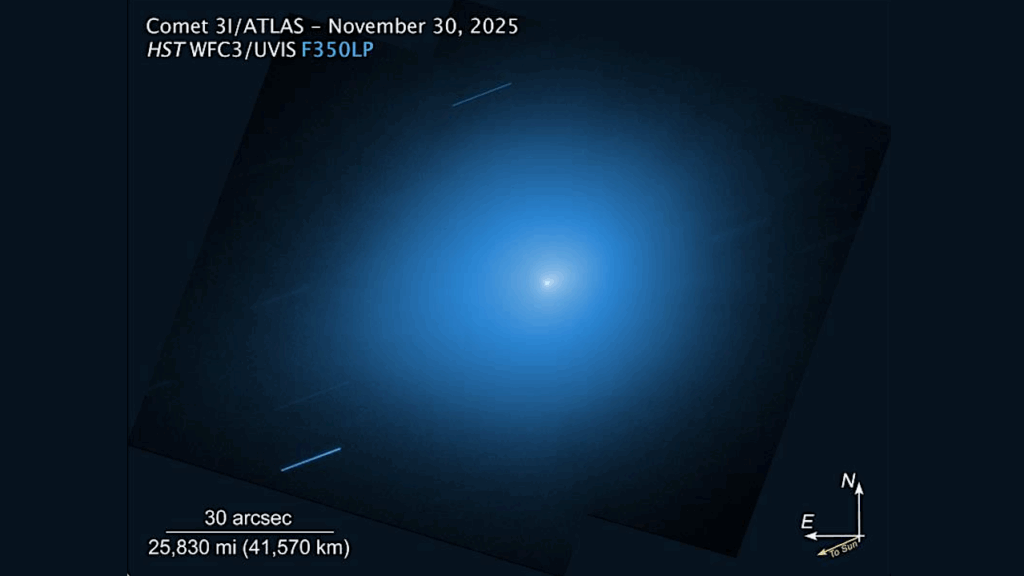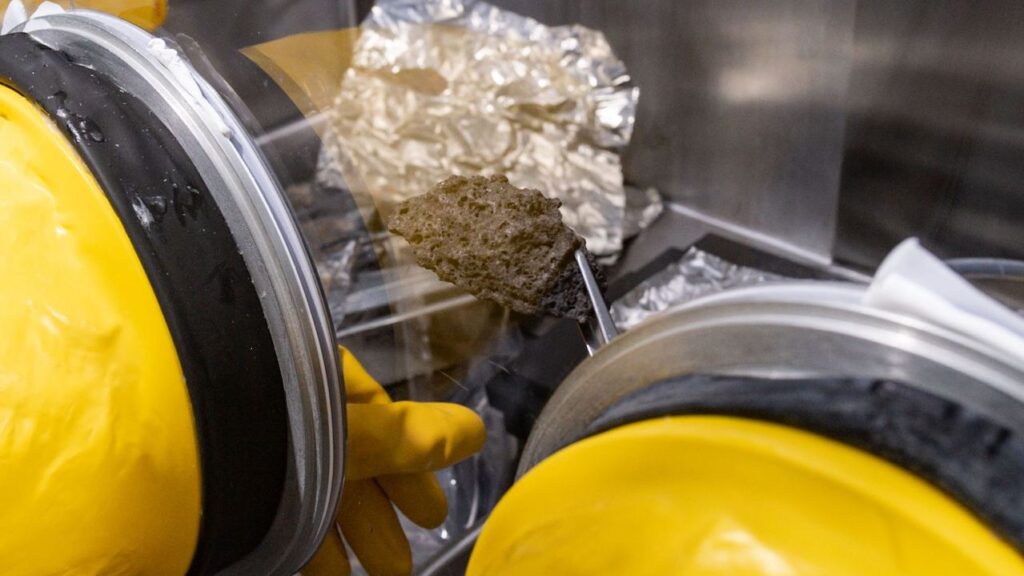Uncertainties In The Inference of Internal Structure: The Case of TRAPPIST-1 f
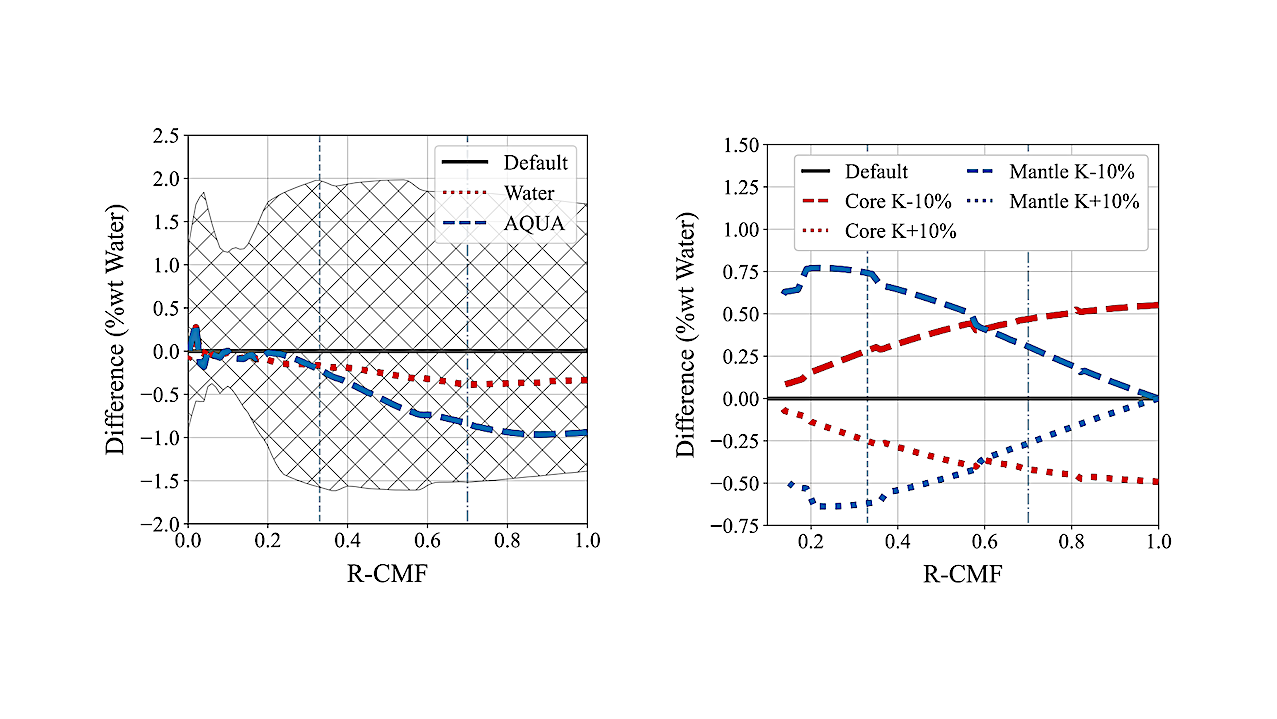
We use the TRAPPIST-1 system as a model observation of Earth-like planets. The densities of these planets being 1-10% less than the Earth suggest that the outer planets may host significant hydrospheres.
We explore the uncertainty in water mass fraction from observed mass and radius. We investigate the interior structure of TRAPPIST-1 f using the open-source solver MAGRATHEA and varying assumptions in the interior model.
We find that TRAPPIST-1 f likely has a water mass fraction of 16.2% ± 9.9% when considering all possible core mass fractions and requires 6.9% ± 2.0% water at an Earth-like mantle to core ratio.
We quantify uncertainties from observational precision, model assumptions, and experimental and theoretical data on the bulk modulus of planet building materials.
We show that observational uncertainties are smaller than model assumptions of mantle mineralogy and core composition but larger than hydrosphere, temperature, and equation of state assumptions/uncertainties.
Our findings show that while precise mass and radius measurements are crucial, uncertainties in planetary models can often outweigh those from observations, emphasizing the importance of refining both theoretical models and experimental data to better understand exoplanet interiors.
David R. Rice, Chenliang Huang, Jason H. Steffen, Allona Vazan
Comments: 18 pages, 8 figures, 3 tables, Accepted in ApJ
Subjects: Earth and Planetary Astrophysics (astro-ph.EP)
Cite as: arXiv:2504.16201 [astro-ph.EP] (or arXiv:2504.16201v1 [astro-ph.EP] for this version)
https://doi.org/10.48550/arXiv.2504.16201
Focus to learn more
Submission history
From: David Rice
[v1] Tue, 22 Apr 2025 18:47:58 UTC (3,896 KB)
https://arxiv.org/abs/2504.16201
Astrobiology,


